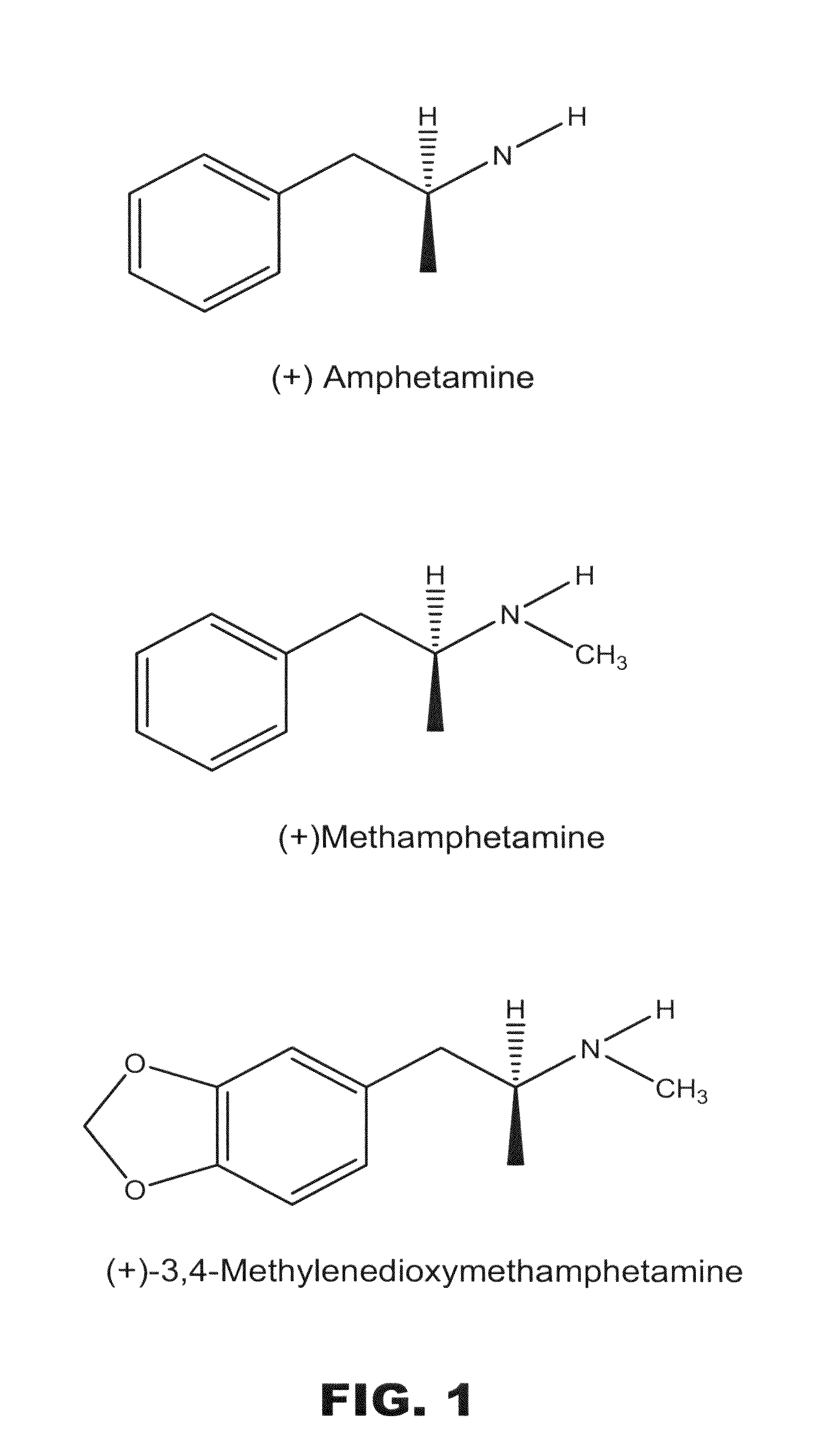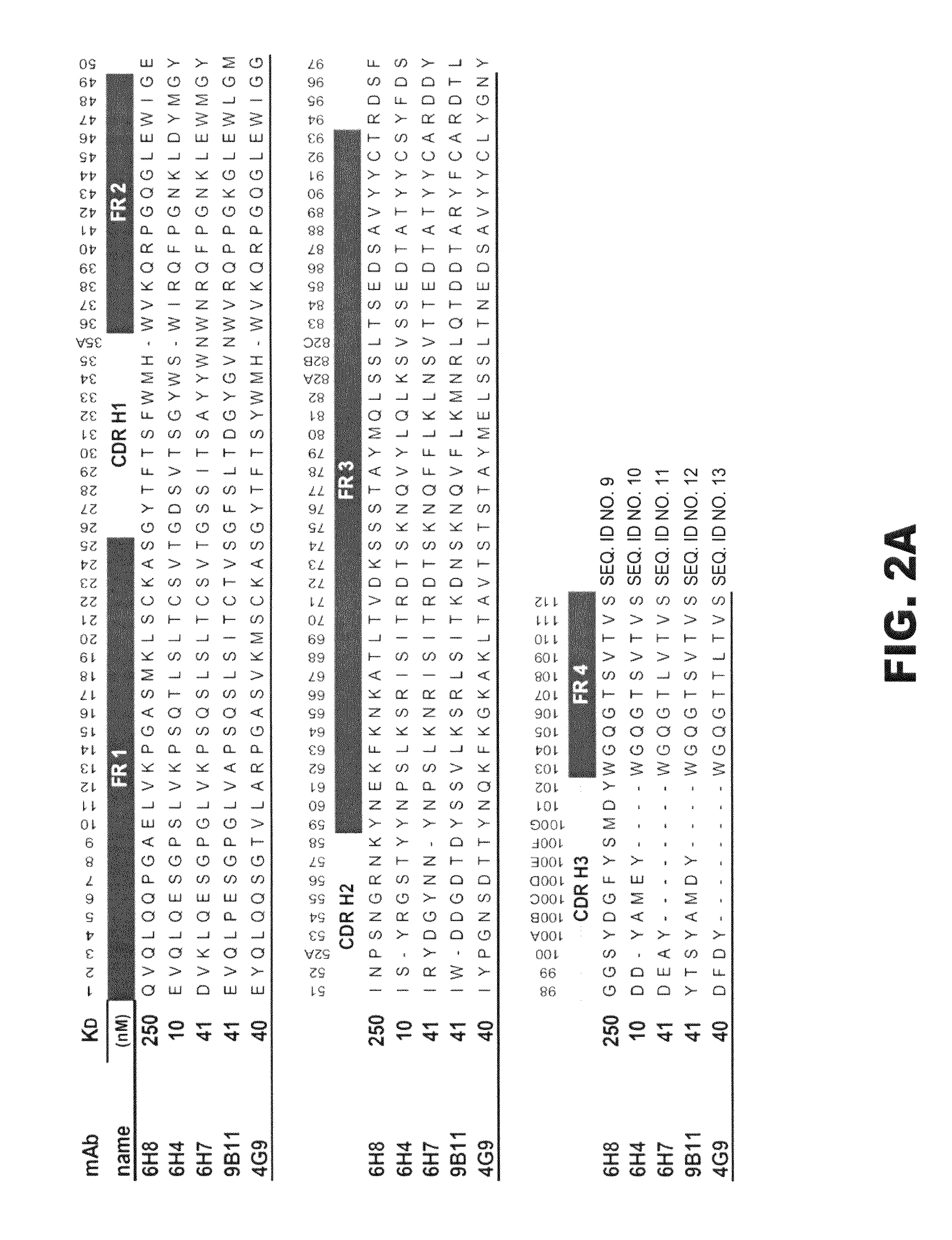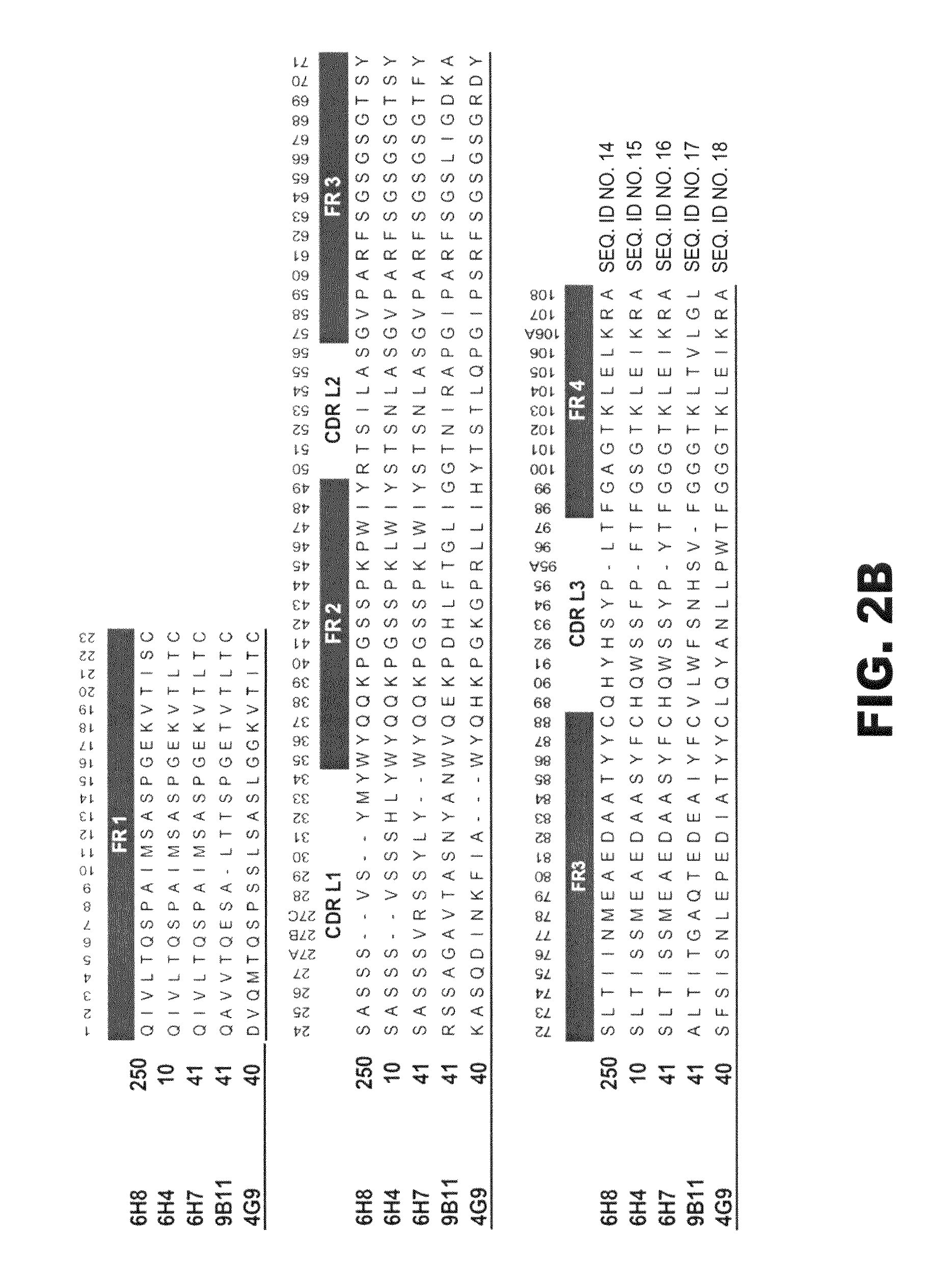Monoclonal antibodies that selectively recognize methamphetamine and methamphetamine like compounds
a monoclonal antibody and methamphetamine technology, applied in the field of monoclonal antibodies, can solve the problems of complicating the development of effective treatments, unable to reduce or treat medically crippling effects, and lack of medications that can do the job of reducing or treating medically crippling effects
- Summary
- Abstract
- Description
- Claims
- Application Information
AI Technical Summary
Benefits of technology
Problems solved by technology
Method used
Image
Examples
example 1
Hapten Design and Antibody Selection
[0107]When generating monoclonal antibodies (mAb, plural and singular) against small molecules, the chemical composition and molecular orientation of the drug-like hapten on the antigen is a crucial determinant. This is especially important when attempting to discover therapeutic mAb against the drugs of abuse (+)methamphetamine ((+)METH), (+)amphetamine ((+)AMP) and the related compound (+)3,4-methylenedioxymethamphetamine ((+)MDMA, the plus isomer in the racemic mixture known as MDMA or ecstasy). The goal of these studies was to design and synthesize (+)METH-like haptens with structural attributes that would make them effective for generating monoclonal antibodies for treating medical problems associated with these stimulant drugs of abuse.
[0108]For these studies, hapten spacers between (+)METH and the carrier protein were progressively lengthened from 4 to 10 atoms to increase the potential for greater interaction of the hapten with the antibod...
example 2
MAb Cross Reactivity Studies
[0127]After screening over 25,000 potential hybridoma cell lines for mAb production, five mAb with the most favorable immunochemical characteristics were extensively studied for molecular properties and preclinical efficacy (see Table 1). The rest of the hybridoma cell lines were stored frozen in case of future need. The selection of a mAb for more extensive in vitro and in vivo testing was based on the desire to have a range of affinities, a range of drug specificities, and a high level of mAb production from the parent hybridoma cell line. This final criterion was needed to increase the feasibility of large scale mAb production for in vivo testing. In most cases there was one or more similar affinity or specificity mAb that were produced from the same fusion. For instance, the separate fusions that produced mAb6H4 and mAb4G9 (see Table 1) also produced mAb with virtually the same affinity and specificity, but slightly different amino acid sequences. The...
example 3
[0134]To gain a better molecular understanding of how the primary amino acid sequence affected mAb affinity for (+)METH, related and unrelated sequence features in each mAb variable region was analyzed. Three of the mAb were IgG1 subclass and two were IgG2 (Table 1). Except for anti-METH / MDMA mAb9B11 (λ light chain), all of the mAb possessed a κ light chain.
[0135]cDNA cloning and sequencing of mAb. For these studies, five prototype anti-METH mAb ranging in METH affinities from 11 to 250 nM were analyzed (Table 1). A single prototype mAb resulting from each of the haptens was chosen for detailed studies. The light chain (LC, singular and plural) cDNA of the mAb were cloned by RT-PCR using Superscript II reverse transcriptase (Invitrogen) with an exact reverse primer matching the C-terminus of the LC named MLEND1.Not (5′-GGG GCG GCC GCG CGT CTC AGG ACC TTT GTC TCT AAC-3′) (SEQ ID NO:1). The LCs of mAb6H4, mAb6H8, and mAb6H7 were amplified in the forward direc...
PUM
| Property | Measurement | Unit |
|---|---|---|
| temperature | aaaaa | aaaaa |
| wavelength | aaaaa | aaaaa |
| pH | aaaaa | aaaaa |
Abstract
Description
Claims
Application Information
 Login to View More
Login to View More - R&D
- Intellectual Property
- Life Sciences
- Materials
- Tech Scout
- Unparalleled Data Quality
- Higher Quality Content
- 60% Fewer Hallucinations
Browse by: Latest US Patents, China's latest patents, Technical Efficacy Thesaurus, Application Domain, Technology Topic, Popular Technical Reports.
© 2025 PatSnap. All rights reserved.Legal|Privacy policy|Modern Slavery Act Transparency Statement|Sitemap|About US| Contact US: help@patsnap.com



